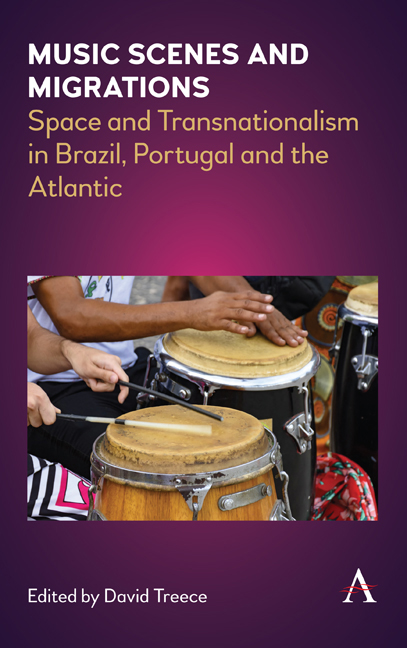Book contents
- Frontmatter
- Contents
- List of Illustrations
- Acknowledgements
- Introduction
- Part 1 Colonial and Postcolonial Transnationalisms, Migrations and Diasporas
- Part 2 Relocating Rio de Janeiro
- Part 3 Demetropolitanizing the Musical City: Other Scenes, Industries, Technologies
- Notes on Contributors
- Notes
- References
- Index
Chapter 8 - Between Temple Yards and Hillsides: Rio deJaneiro’s Samba, Its Spaces, Humour andIdentity
Published online by Cambridge University Press: 20 January 2022
- Frontmatter
- Contents
- List of Illustrations
- Acknowledgements
- Introduction
- Part 1 Colonial and Postcolonial Transnationalisms, Migrations and Diasporas
- Part 2 Relocating Rio de Janeiro
- Part 3 Demetropolitanizing the Musical City: Other Scenes, Industries, Technologies
- Notes on Contributors
- Notes
- References
- Index
Summary
During the carnival season in the late nineteenth andearly twentieth centuries, a wide variety of musicalstyles could be heard on the streets of Rio deJaneiro, such as polkas, modassertanejas (rural folk ballads), xotes (a dance form adaptedfrom the German schottische), waltzes, marches andquadrilles. They were released throughout the yearas sheet music for the piano and were played instreet parties, circus events and subsequently inthe teatros de revistaor vaudeville. Amid this musical ‘chaos’, revellersamused themselves by throwing water on passers-by ina carnival which still included the pre-Lentenfestivities known as entrudo. In fact, attempts to reshapeand civilize this particular festivity remainedineffective for many years. The homogenization ofcarnival and its music started to take effect fromthe 1930s with the emergence of radio broadcastingin Brazil, which disseminated and privilegedparticular songs, rhythms and composers, giving riseto specific patterns and trends. It was also duringthis period that samba became consolidated, in itsassociation with the samba school parades, as thepre-eminent genre of carnival music.
However, the history of samba and of song recording forthis festivity takes us back to the late nineteenthcentury, when the former capital city underwent anintense growth in population arising from theabolition of slavery, as immigrants, ex-slaves andrural workers came to the cities in search of newopportunities and forms of work. Describing thetransformation of carnival that accompanied thedemographic changes of those years, the contemporarywriter Coelho Neto suggested that it was ‘as if thecountryside had invaded the city’ (cited in Tinhorão1990, 210). This is not unexpected given that,originally, many Afro-Brazilian festivities wereclosely linked to the rural world and its religiousculture.
The Brazilian people's propensity for festivities andreligiosity attracted the attention of foreignerssuch as Englishman Thomas Ewbank who, in 1846,remarked that it was the external, festive aspectsof religious ritual that most seemed to interest thefaithful (Ewbank 1976, 159–61). Religiousfestivities such as those dedicated to Our Lady ofGlory, Our Lady of Penha and the Divine Holy Spiritwere extremely popular in the late nineteenthcentury.
- Type
- Chapter
- Information
- Music Scenes and MigrationsSpace and Transnationalism in Brazil, Portugal and the Atlantic, pp. 95 - 102Publisher: Anthem PressPrint publication year: 2020



